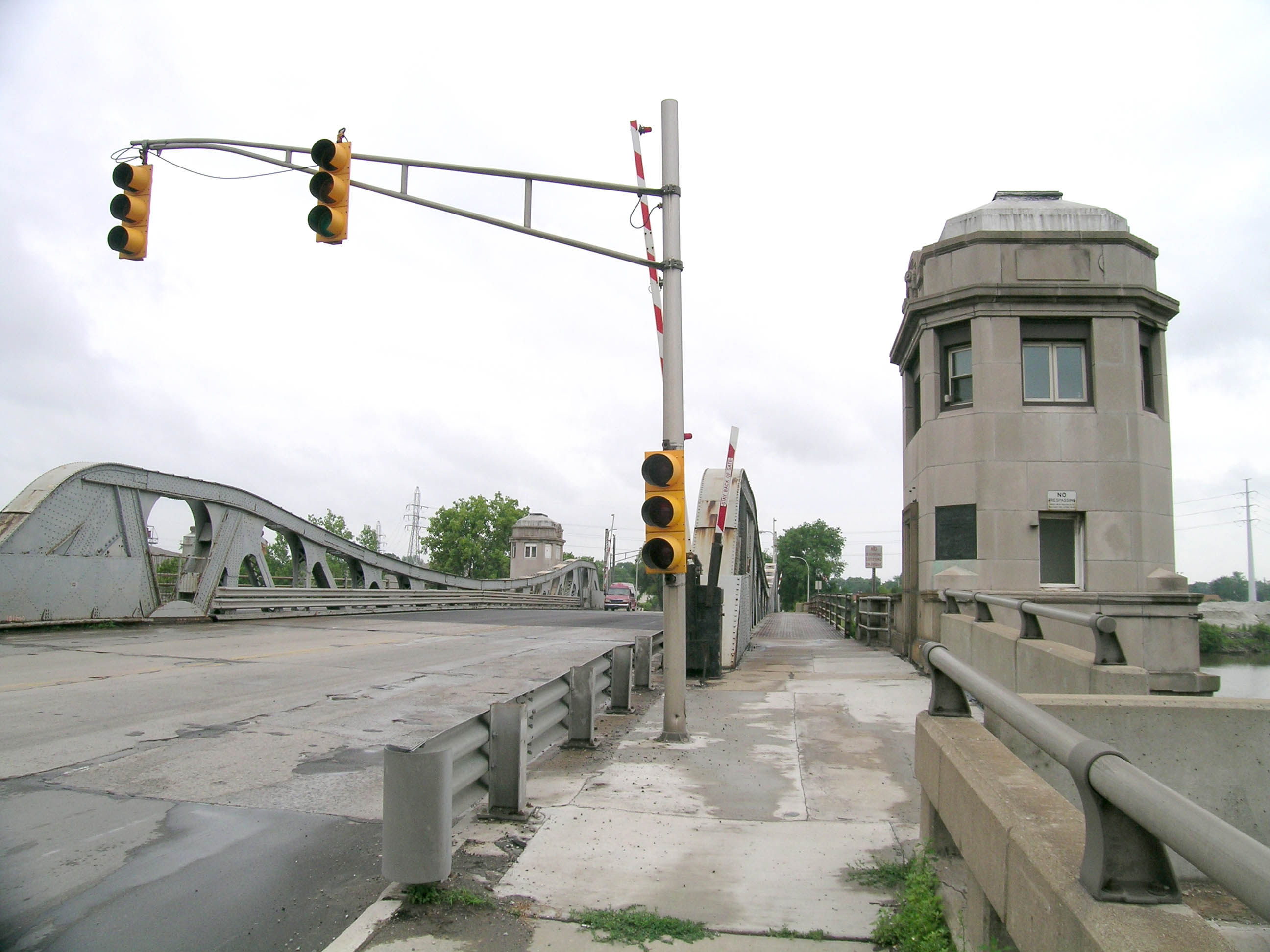- West Jefferson Avenue-Rouge River Bridge
Infobox_nrhp | name =West Jefferson Avenue--Rouge River Bridge
nrhp_type =

caption = Rouge River bridge looking west
location=River Rouge, Michigan
lat_degrees = 42
lat_minutes = 16
lat_seconds = 50
lat_direction = N
long_degrees = 83
long_minutes = 7
long_seconds = 44
long_direction = W
locmapin = Michigan
area =
built =1922
architect= Stroebel Steel Construction Company; Valley Bridge and Iron Company
architecture= Other
added =February 10 ,2000
governing_body = Local
mpsub=Highway Bridges of Michigan MPS
refnum=00000079cite web|url=http://www.nr.nps.gov/|title=National Register Information System|date=2008-04-15|work=National Register of Historic Places|publisher=National Park Service]The West Jefferson Avenue--Rouge River Bridge is a bridge located where Jefferson Avenue crosses the Rouge River at the border of
Detroit and River Rouge,Michigan .History
Before the current bridges crossing the
Rouge River at West Jefferson and Fort Streets were built, the two crossings were served by narrow swing bridges. [http://www.michigan.gov/mdot/0,1607,7-151-9620_11154_11188-29408--,00.html Jefferson Ave. / Rouge River] from the Michigan Department of Transportation] By the late 1910s, these spans urgently needed replacing, in large part because they interfered with the Federal government's plans to dredge the Rouge River to provide freighter access to theFord River Rouge Complex . Both the city of Detroit (who was responsible for maintaining the bridges) and Wayne County agreed that the county could better oversee the construction, but legal restrictions prohibited county involvement until state law was changed in 1919.With the new legislation in place, plans were drawn up in 1920 for a "Chicago city type of single trunnion, double-leaf bascule bridge" for each bridge. The cost for the pair of bridgges was estimated at $2 million. A bond issue to fund construction was approved by Wayne County voters, and an alternate route onto which Jefferson Avenue traffic could be shunted was devised. Wayne County obtained an old truss, originally used by the Michigan Central Railroad upstream of Jefferson, and floated it downstream to a location 200 yards north of Jefferson. The old Jefferson Avenue bridge was closed and the detour opened on November 13, 1920.
Construction on the bridge commenced immediately. Each leaf was to be supported by four 12-foot-square concrete footings, sunk to the bedrock 70 feet below the water line. The footings supported a concrete pit measuring 50 by 80 feet which housed the counterweights and machinery. Wayne County contracted with the Missouri Valley Bridge and Iron Company of Leavenworth, Kansas to build the substructure for $408,280; with the Strobel Steel Construction Company of Chicago to build the superstructure for $378,005; Cooper-Widenmann Construction Company of Detroit to build the operators' houses for $78,700; and Fowler Electrical Supply Company of Toledo, Ohio, to supply electrical equipment for $34,809. County crews graded and paved the approaches.
On August, 21 1922, the two bascule leaves were lowered simultaneously for the first time. The bridge was opened to traffic on October 17; at the time, work on the approaches was still ongoing, but operating machinery on the detour bridge failed, necessitating the bridge's removal to allow free passage of river traffic. The next year, the federal government completed its planned dredging of the Rouge River.
In the early 1980s, the city spent $2.2 million to repair portions of the West Jefferson Bridge (as well as doing similar work to the crossing at Dix Avenue). These repairs have somewhat While altered the West Jefferson Bridge, but it retains its integrity as a significant example of early twentieth-century engineering.
References
Wikimedia Foundation. 2010.
